Oct. 31, 2025
Prelims Pointers
Oct. 31, 2025
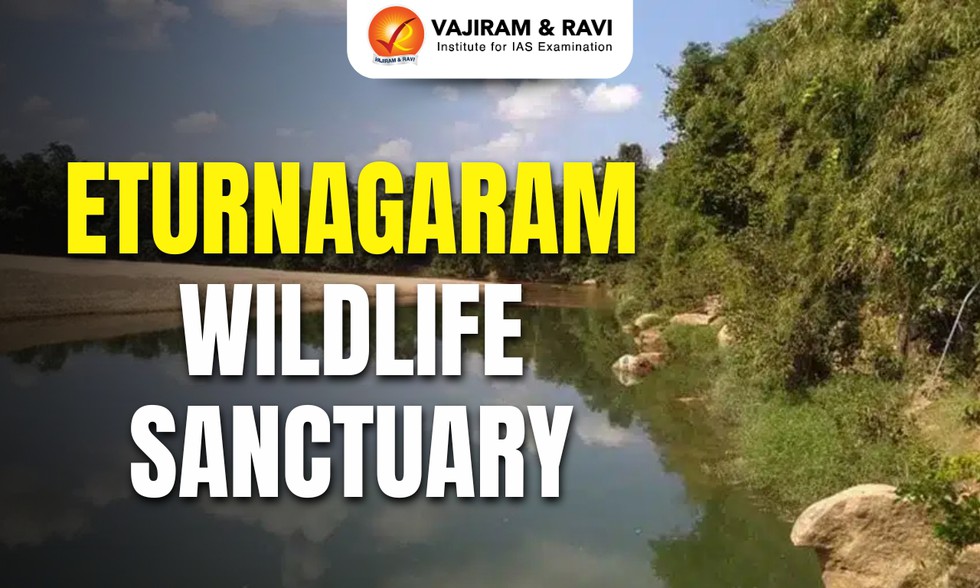
About Eturnagaram Wildlife Sanctuary:
- It is located near the border of Maharashtra, Chhattisgarh, and Telangana in the village of Eturnagaram, a tribal village in the Mulugu district of Telangana.
- It is located 100 km from Warangal and 250 km from Hyderabad.
- Established in 1952, this sanctuary spreads over an area of approximately 812 sq.km.
- It has a water source called Dayyam Vagu, which separates the sanctuary into two parts.
- The river Godavari also passes through it.
- The landscape is undulating, ranging from steep slopes to gentle slopes from west to east.
- The famous Sammakka-Saralamma Temple is situated inside the sanctuary.
- Flora:
- The region is covered completely with thick natural vegetation, and it falls in the tropical dry deciduous.
- It is rich in the growth of teak, bamboo, and other trees like madhuca and terminalia.
- Fauna: This sanctuary provides shelter to Tiger, Leopard, Panther, Wolf, Wild Dogs, Jackals, Sloth Bear, Chousingha, Black Buck, Nilgai, Sambar, Spotted Deer, Four Horned Antilope, Chinkara, Black Buck, Gaur, and Giant Squirrels.
Prelims Pointers
Oct. 31, 2025
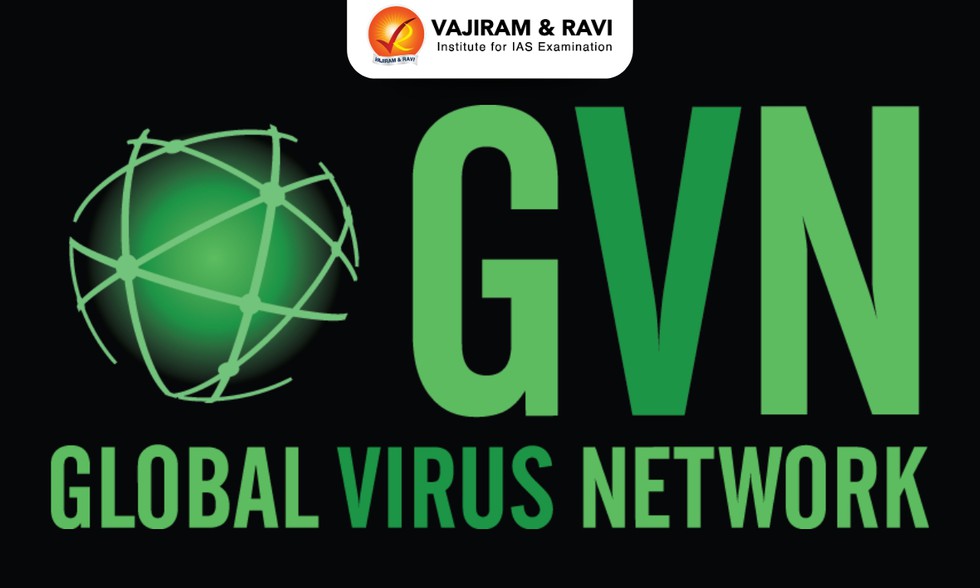
About Global Virus Network (GVN):
- It is a voluntary consortium of virology laboratories and affiliated scientists that seek to prevent and control global viral threats.
- It represents more than 25 countries and includes experts in every class of virus-causing disease in humans.
- No single institution in the world has expertise in all viral areas.
- GVN brings the best medical virologists together to leverage individual strengths and to focus global teams of scientists on key scientific problems.
- The power of GVN lies in its global reach, the depth of its science, and its commitment to solving viral challenges facing the human population.
- The GVN has 3 main interest areas:
- Support for cutting-edge research
- Public education
- Advocacy.
Prelims Pointers
Oct. 31, 2025
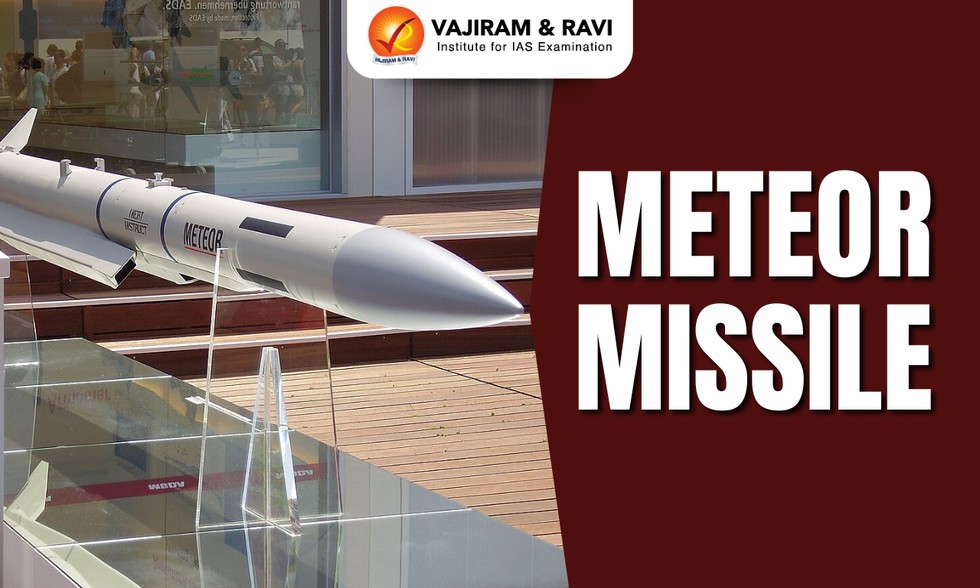
About Meteor Missile:
- It is an advanced radar-guided, beyond-visual-range air-to-air missile (BVRAAM).
- METEOR has been developed by a group of European partners led by MBDA to meet the needs of six European nations: the UK, Germany, Italy, France, Spain, and Sweden.
- MBDA is a European multinational corporation specialized in the design, development, and manufacturing of missiles and related systems.
- Features:
- It has a length of 3.65 m and a diameter of 0.178 m.
- Unlike most similar solid-fuel missiles, the Meteor is equipped with a ramjet engine, which allows for controlled flight speed and complex maneuvers.
- It has a range of up to 200 kilometres.
- Designed for a speed greater than Mach 4, the missile has a large no-escape zone.
- Guided by an advanced active radar seeker, Meteor provides all-weather capability to engage a wide variety of targets from agile fast jets to small UAVs and cruise missiles.
- It is equipped with a two-way datalink, which allows the launch platform to provide updates on targets or re-targeting when the missile is in flight.
- It is equipped with a blast-fragmentation warhead.
Prelims Pointers
Oct. 31, 2025
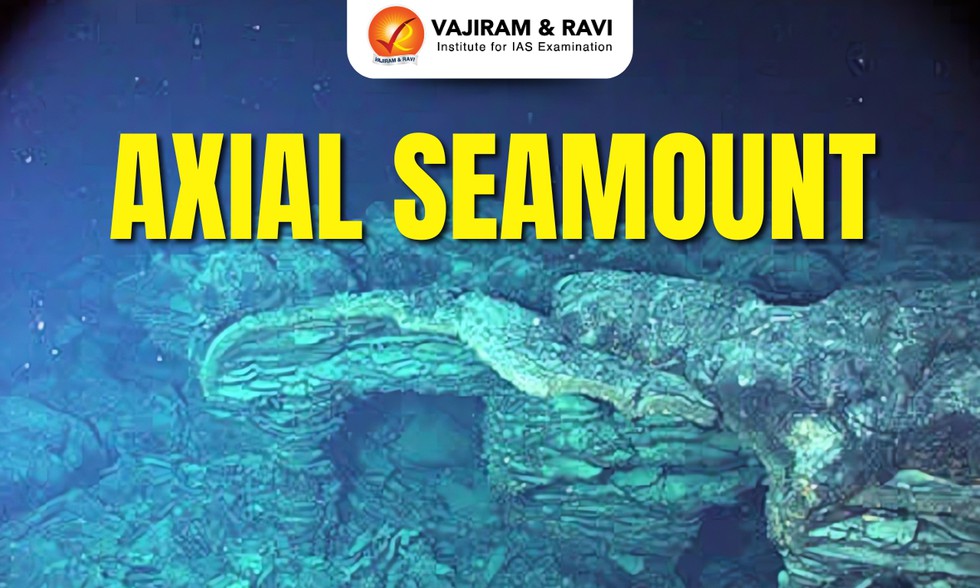
About Axial Seamount:
- It is an underwater volcano located about 300 miles off the coast of Oregon, United States, in the Pacific Ocean.
- It is a shield volcano with a summit marked by a large caldera.
- It rises to a depth of 1400 m below sea level.
- It is formed by a hot spot, an area in the Earth’s mantle where hot plumes of molten material rise into the crust.
- It is located on the Juan de Fuca Ridge, the boundary between the Pacific and Juan de Fuca tectonic plates.
- The volcano is home to hydrothermal vents, underwater hot springs where seawater is heated by magma and ejected in mineral-rich plumes.
- These vents support diverse marine life, including microbes that use volcanic gases for energy, forming the basis of an ecosystem that includes giant tubeworms, spider crabs, clams, fish and octopuses.
- It is the most active submarine volcano in the northeast Pacific, with known eruptions in 1998, 2011, and 2015.
- While Axial Seamount’s eruptions are not dangerous to people on land, they offer valuable opportunities for scientific observation.
- It is part of the Ocean Observatories Initiative (OOI) and hosts the world’s first underwater volcanic observatory called New Millennium Observatory (NeMO).
- NeMO provides real-time data originating from Axial through a variety of undersea cables to a shore station in Pacific City, Oregon.
Prelims Pointers
Oct. 31, 2025
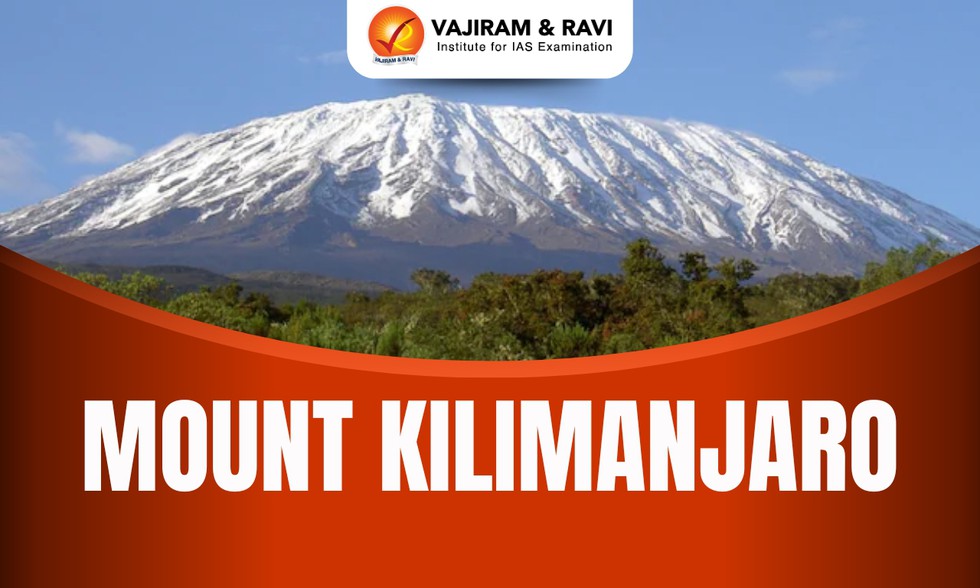
About Mount Kilimanjaro:
- Location: It is located in northeastern Tanzania, near the Kenya border.
- It is Africa’s tallest mountain (5,895 m) and the world’s largest free-standing mountain (which means not part of a mountain range).
- It extends approximately east-west for 50 miles (80 km).
- Also called a stratovolcano(a term for a very large volcano made of ash, lava and rock), Kilimanjaro is made up of three cones: Kibo, Mawenzi and Shira.
- Among these cones Kibois, the tallest of the three volcanic formations, is also a dormant volcano, while the other two are extinct volcanoes.
- Uhuru Peak, the highest free-standing peak in Africa, is located on the volcanic cone Kibo.
- Kilimanjaro is also known for its snow-capped peak.
- Vegetation: The mountain has five main vegetation zones, from the lowest to the highest point: Lower slopes, montane forest, heath and moorland, alpine desert, and summit.
- The Kilimanjaro National Park was named a United Nations Educational, Scientific, and Cultural Organization (UNESCO) World Heritage Site in 1987.
Prelims Pointers
Oct. 31, 2025

About National e-Vidhan Application:
- It is an online platform designed to digitize the legislative processes of all state and union territory assemblies.
- It is one of the 44 Mission Mode Projects (MMPs) under the Digital India Programme of the Government of India.
- It aims to make the functioning of all State Legislatures paperless and integrate all Legislative Houses on a single digital platform under the vision of ‘One Nation, One Application’.
- NeVA is a device neutral and member centric application created to equip them to handle diverse House Business smartly by putting entire information regarding member contact details, rules of procedure, list of business, notices, bulletins, bills etc.
- It assists the Chair of the House in conducting proceedings smoothly while enabling members to fulfill their responsibilities efficiently.
- The NeVA platform is hosted on Meghraj 2.0, India’s cloud infrastructure, ensuring robust scalability, security, and data integrity.
- Features of National e-Vidhan Application:
- It provides real-time access to key legislative documents, such as agendas, bills, and reports.
- The platform features a secure digital repository, safeguarding the confidentiality and integrity of legislative data.
- The platform also offers multilingual capabilities, catering to the linguistic diversity across states and regions, making it accessible to a broader range of users.
- Its device-agnostic nature allows it to be accessed seamlessly across smartphones, tablets, laptops, and desktops.
Prelims Pointers
Oct. 31, 2025
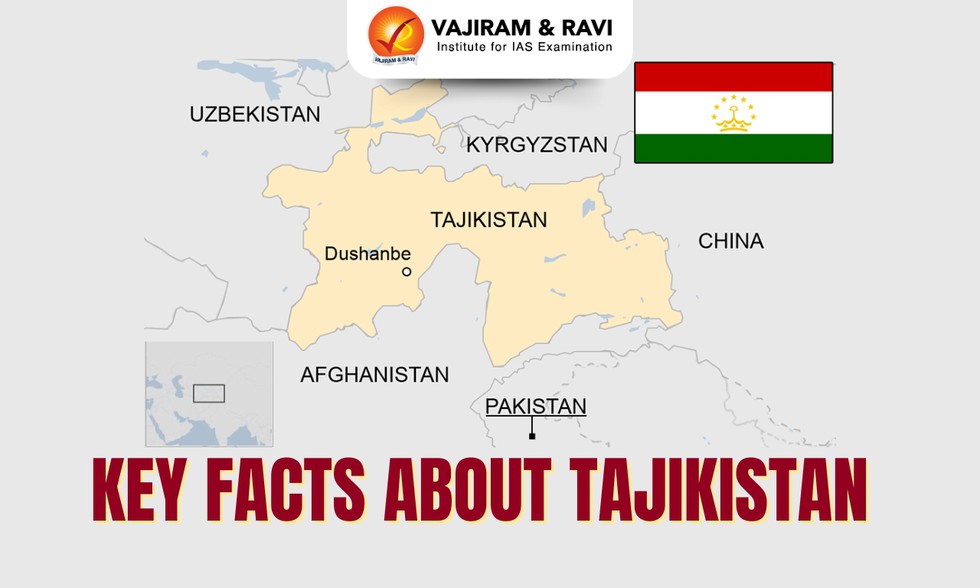
About Tajikistan:
- Tajikistan is a landlocked country in the heart of Central Asia.
- Bordering countries: It is bordered with Kyrgyzstan (North), Uzbekistan (West), China (East), and Afghanistan (South).
- It is one of the members of Shanghai Cooperation Organisation.
- Political Structure: It is governed by the President, and the legislative function is assigned to the bicameral parliament
- Geographic Features of Tajikistan
- Terrain: Mountainous region dominated by the Alay Mountains in the north and the Pamirs in the southeast.
- Highest Point: Tajikistan's highest point is Qullai Ismoili Somoni which peaks at 24,589 ft. (7,495 m).
- Rivers: It has a dense river network, including the Syr Darya and the Amu Darya.
- Climate: It consists of mid-latitude continental, hot summers, mild winters; semiarid to polar in Pamir Mountains.
- Lakes: Lake Karakul and Iskanderkul
- Natural resources: Petroleum, Uranium, Mercury, brown coal, lead, zinc, antimony, tungsten, silver, gold etc.
- Capital City: Dushanbe.
Prelims Pointers
Oct. 31, 2025
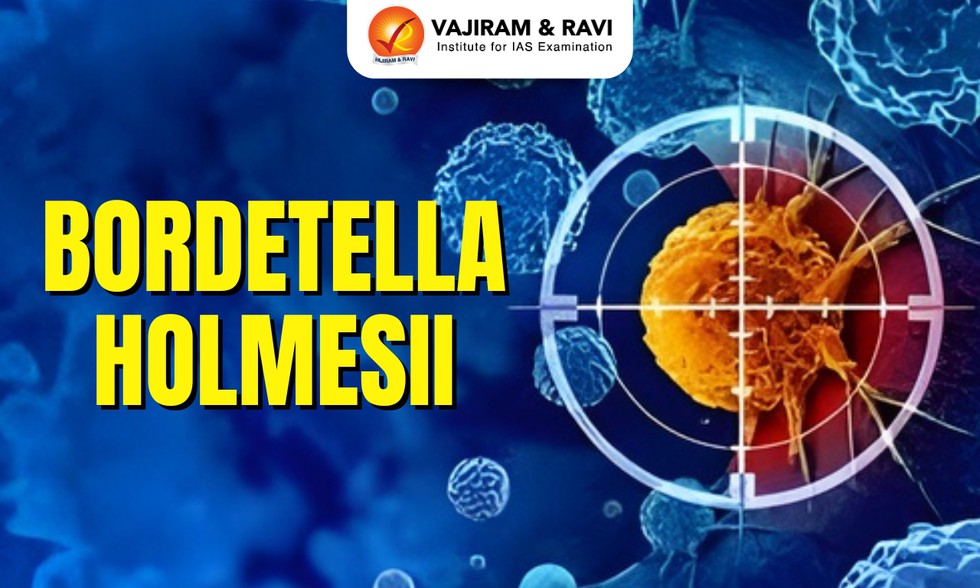
About Bordetella holmesii:
- It is a bacterium recently recognized in 1995.
- It is a gram-negative coccobacillus that can cause pertussis-like symptoms in humans as well as invasive infections.
- It can cause endocarditis, community acquired pneumonia, cellulitis, suppurative arthritis, and pyelonephritis.
- Researchers discovered that nearly 37 per cent of infections in North India were caused by Bordetella holmesii (bacterium), surpassing the number of infections from Bordetella pertussis.
What is Whooping cough?
- It is also known as pertussis.
- It is a highly contagious infection which impacts the respiratory tract and is caused by Bordetella pertussis bacteria.
- It gets its name from the “whooping” sound which the patient experiences while coughing.
- It is particularly severe in infants and in case of complications may lead to pneumonia and even death.
- Transmission of Whooping cough
- A person catches this bacteria via droplets when an infected person coughs or sneezes.
- It attaches itself to the throat lining and then produces toxins which damage hair-like projections which clear debris and mucus.
- This leads to inflammation in the airways and causes severe coughing fits.
- Symptoms of Whooping cough
- It begins with cold-like symptoms accompanied with low-grade fever. As it progresses, cough get accompanied with “whooping” sound.
- It causes sleep apnea in children.
- Treatment: Diphtheria, tetanus, and pertussis (DTaP) vaccines.
Prelims Pointers
Oct. 31, 2025
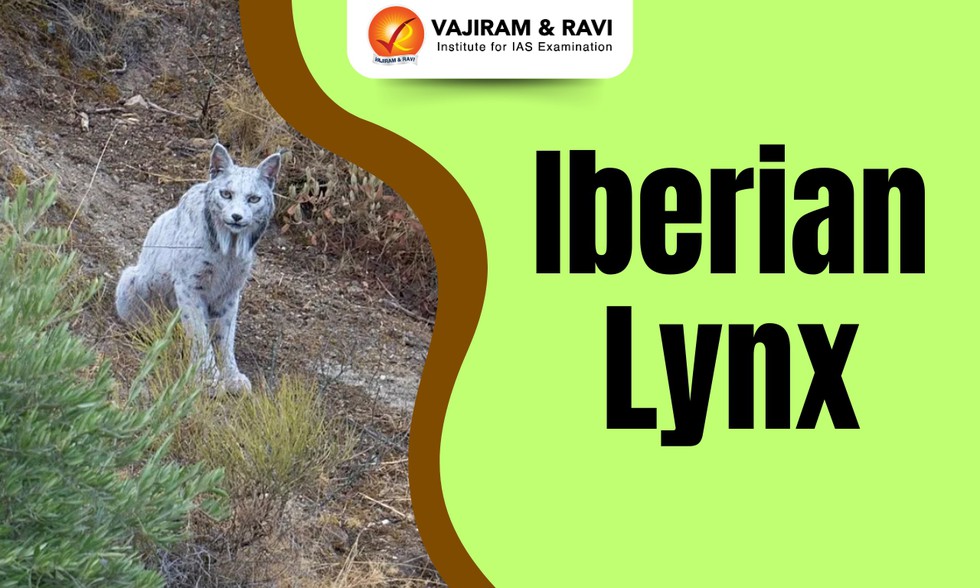
About Iberian Lynx:
- It is a carnivore species endemic to Europe.
- Appearance: It is the world’s most endangered and known for its pointy ears, long legs and leopard-like spotted fur.
- This species, like other cat species, is sexually dimorphic, with males being heavier and longer than females.
- This lynx is generally nocturnal and its activity patterns are closely synchronized with those of their major prey, the rabbit.
- Habitat: It requires variable terrain below 1300 m, containing a mosaic of closed Mediterranean scrubland interspersed with open patches of grassland, often with marsh ecotones.
- Distribution: Iberian lynx are found only in two small areas of southwest Spain on the Iberian Peninsula, west of the Pyrenees mountains.
- Threats: These are related to human activities, such as poaching and habitat destruction, Illegal Hunting and decreased food base etc.
- Conservation status
- IUCN Red list: Vulnerable
- CITES: Appendix II.
Prelims Pointers
Oct. 31, 2025
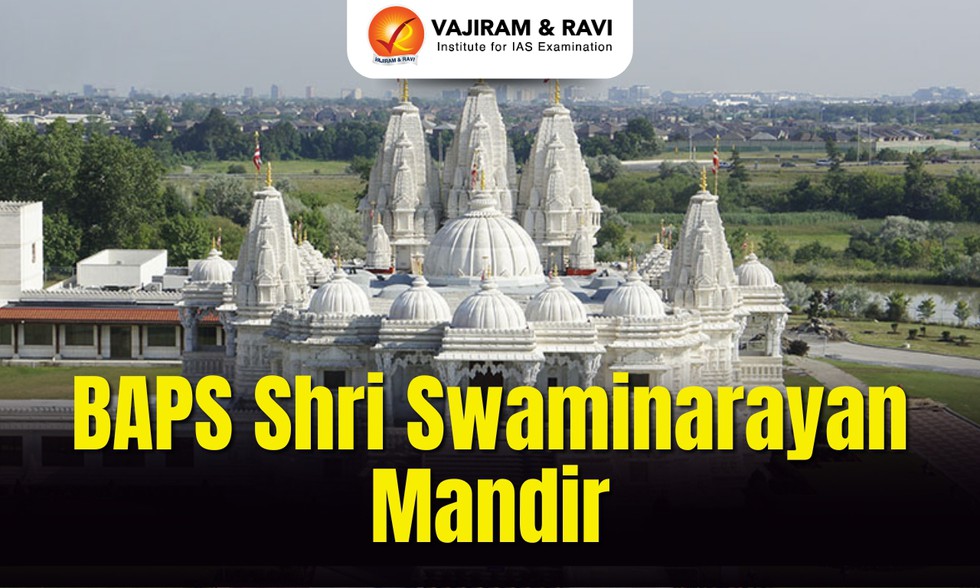
About BAPS Shri Swaminarayan Mandir:
- Neasden Temple, or BAPS Shri Swaminarayan Mandir, is a Hindu Temple, located in Neasden, London.
- It was the first traditional Hindu stone temple in Europe.
- The temple opened in 1995.
- It was built using old, traditional methods and materials.
- The Guinness World Records 2000 once called it the "Biggest Hindu Temple outside India."
- It was built by Pramukh Swami Maharaj, a respected spiritual leader.
- The temple used a lot of special stone: 2,828 tonnes of Bulgarian limestone and 2,000 tonnes of Italian marble.
- This stone was sent to India to be carved by 1,526 sculptors.
- The temple cost about £12 million to build.
- Since 2000, other BAPS temples have been built that are even bigger.
- The Neasden Temple was built and paid for entirely by the Hindu community.
- The whole project took five years, but the main temple building was finished in just two and a half years.
- Building work started in August 1992.
- The temple complex is made up of a few important parts:
- A mandir, which is the main temple building. It is made from hand-carved Italian marble and Bulgarian limestone.
- A permanent exhibition called "Understanding Hinduism."
- The BAPS Shri Swaminarayan Haveli, which is a cultural centre. It has a big hall, a gym, a bookshop, and offices.
Oct. 30, 2025
Prelims Pointers
Oct. 30, 2025
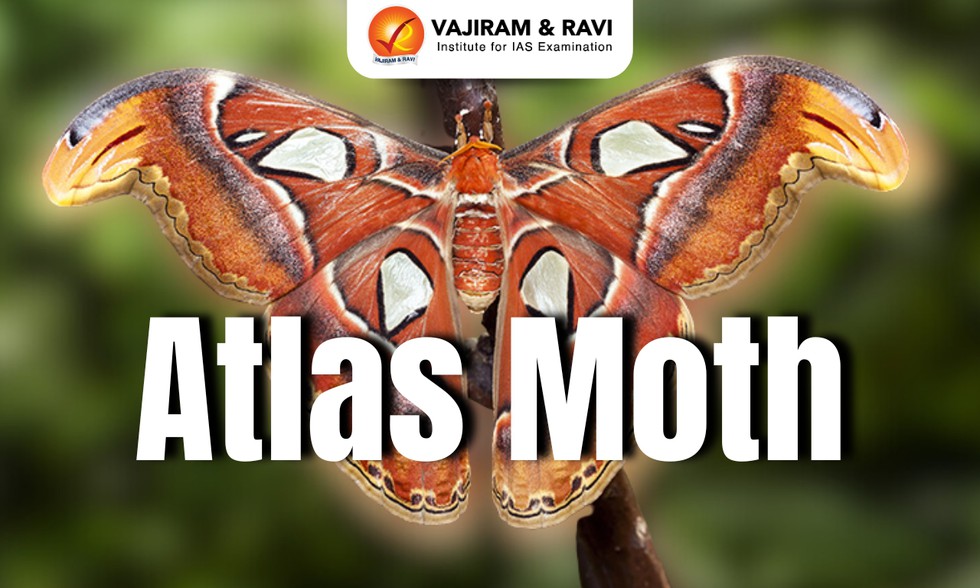
About Atlas Moth:
- It is a massive saturniid moth native to tropical and subtropical rainforest regions of Southeast Asia.
- Scientific Name: Attacus atlas
- Distribution: It is widely distributed in Southeast Asia, including in Nepal, northeastern India, Bangladesh, Bhutan, southeastern China, Laos, Cambodia, Vietnam, and Taiwan.
- Habitat:
- It is primarily found in tropical and subtropical rainforests.
- They are cultivated in some areas for their silk called fagara, which is rough and woolly.
- Features:
- It is one of the largest moths in the world, with a wingspan of over 9.8 inches.
- Their wingspans are also amongst the largest, reaching over 25 cm (10 in).
- Females are slightly larger than males.
- The wings of an atlas moth are a beautiful mix of brown, orange, white, and pink colors.
- They have clear, triangle-shaped "windows" on each wing. These windows look like they are made of glass.
- Like other moths in the family Saturniidae, adults do not have working mouthparts and only live for a few days to a week.
- Atlas moths lives only 14-18 days.
Prelims Pointers
Oct. 30, 2025
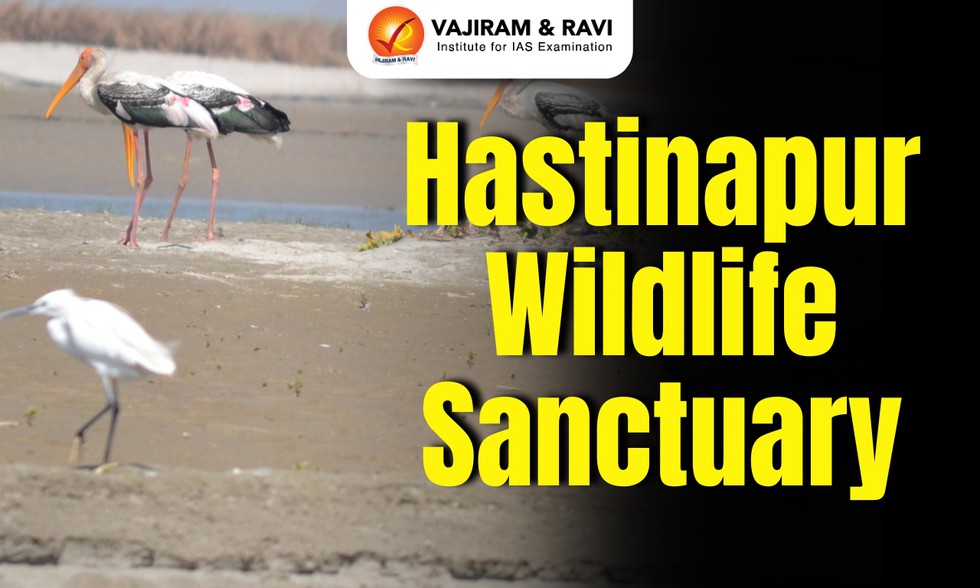
About Hastinapur Wildlife Sanctuary:
- It is located in the Meerut District of Uttar Pradesh.
- Established in 1986, it lies alongside the northern tip of the River Ganga, flowing through the districts of Muzaffarnagar and Bijnor.
- It is situated near the mediaeval town of Hastinapur, which is of cultural importance.
- It is spread across an area of 2073 sq.km.
- It is made up of a variety of environments, including marshes, grasslands, woodlands, and riverine ecosystems.
- The Ganges River and its tributaries flow through the sanctuary, contributing to its rich biodiversity.
- Vegetation: The vegetation can be classified into tall wet grasslands, dry short grasslands, scrubs, and plantations.
- Flora: Dominated by Sal (Shorea robusta), Sheesham (Dalbergia sissoo), Khair (Acacia catechu), and Jamun (Syzygium cumini) trees.
- Fauna:
- It is home to the state animal, the Swamp Deer (Barasingha), as well as Hog Deer, Cheetal, Sambar, and the State Bird, the Saaras (Crane).
- It is a part of the “Asia Flyway” project, and many migratory birds, both local and foreign, flock in numbers near the numerous water bodies present in the region.
- Under Crocodile Breeding Projects, baby crocodiles are released in the Ganga River near Hastinapur.
- Under the aegis of the World Wide Fund (WWF), the Turtle Rehabilitation Program also has its centre near the Hastinapur Sanctuary.
Prelims Pointers
Oct. 30, 2025
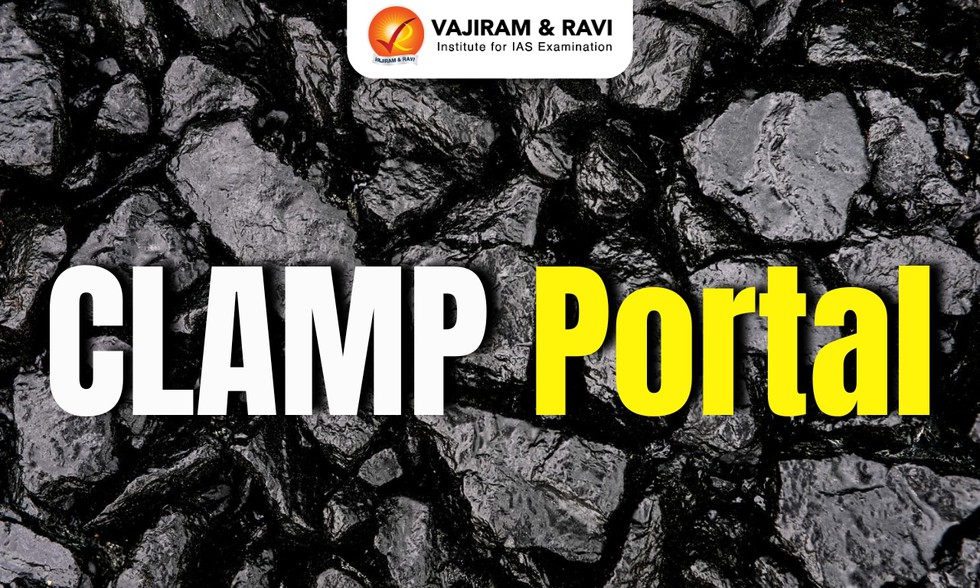
About CLAMP Portal:
- The Coal Land Acquisition, Management, and Payment (CLAMP) portal is a unified digital solution.
- It is aimed at streamlining land acquisition, compensation, and rehabilitation & resettlement (R&R) processes in the coal sector.
- It serves as a centralized repository of land records, the portal ensures data integration, enhances accountability, and minimizes procedural delays.
- Initiative of: Ministry of Coal
- Advantages: CLAMP portal enhances transparency, efficiency, and inter-agency coordination in land management practices across coal PSUs.
Key Facts about Koyla Shakti Dashboard
- It is a digital platform that integrates the entire coal value chain from mine to market on a unified interface.
- Features: The platform facilitates real-time coordination among coal companies, railways, ports, and end users, thereby enhancing operational efficiency and ensuring seamless coal logistics.
- The platform acts as a comprehensive decision-support system, ensuring:
- Seamless coordination among coal companies, railways, ports, and end users.
- Transparency and accountability through data-driven monitoring.
- Faster, smarter decision-making enabled by live analytics and digital dashboards.
Prelims Pointers
Oct. 30, 2025
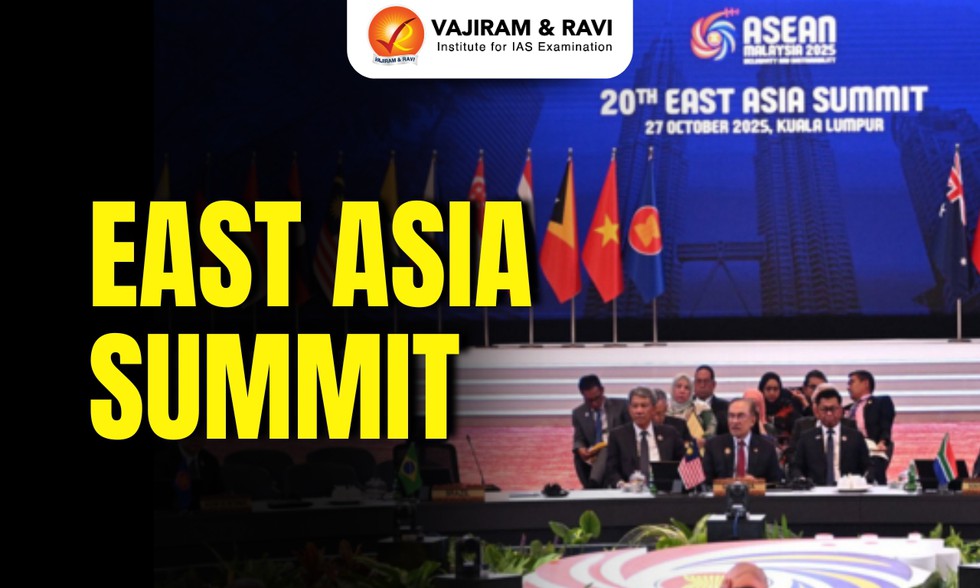
About East Asia Summit:
- It is the premier Leaders-led forum for dialogue and cooperation on strategic, political, and economic issues of mutual interest and concern in the East Asia region.
- It was established in 2005 with the convening of the 1st Summit in Kuala Lumpur, Malaysia.
- Member countries: ASEAN Member States (Brunei, Cambodia, Indonesia, Laos, Malaysia, Myanmar, Philippines, Singapore, Thailand, and Vietnam), Australia, China, India, Japan, New Zealand, and the Republic of Korea, United States and Russia.
- To become a member of the EAS, countries must:
- Sign the ASEAN Treaty of Amity and Cooperation (TAC)
- Be a formal dialogue partner of ASEAN
- Have substantive cooperative relations with ASEAN
- Six priority areas of regional cooperation within the framework of the EAS
- Environment and Energy,
- Education,
- Finance,
- Global Health Issues and Pandemic Diseases,
- Natural Disaster Management, and
- ASEAN Connectivity.
Prelims Pointers
Oct. 30, 2025
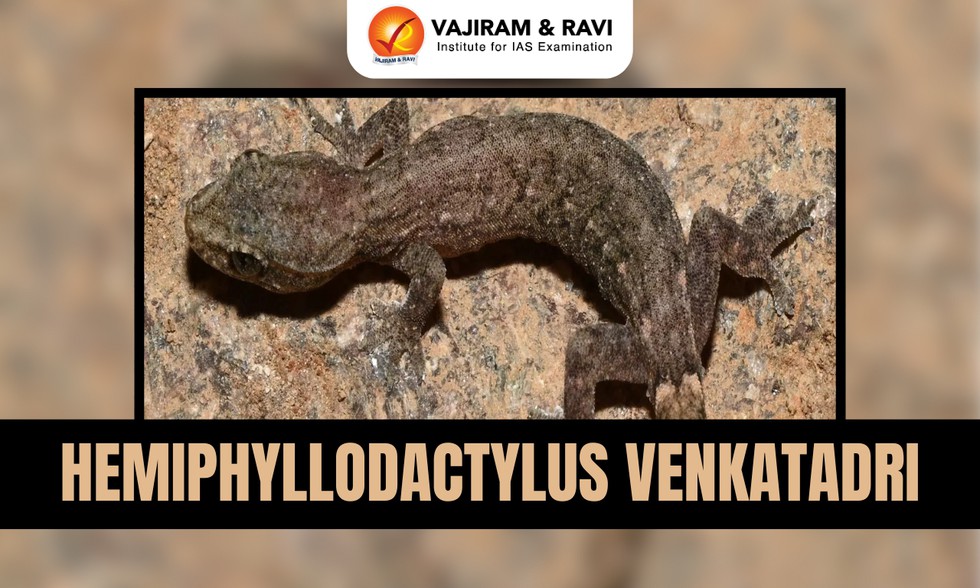
About Hemiphyllodactylus Venkatadri:
- It is a new species of slender Gecko belonging to the genus Hemiphyllodactylus.
- It was discovered from Tirumala hill ranges within the Seshachalam biosphere reserve in Andhra Pradesh.
- It derives its name from the sacred Venkatadri Hills.
- It is the second slender gecko species recorded from Andhra Pradesh, after Hemiphyllodactylus arakuensis.
- Features of Hemiphyllodactylus Venkatadri
- Venkatadri slender geckos are considered “small,” reaching just over 2 inches in length.
- Their limbs are short, and they have “spurs” at the base of their tails.
Key Facts about Seshachalam biosphere reserve
- It is also known as Tirupati-Kadapa hills are one of the major landscapes of Eastern Ghats of Southern Andhra Pradesh.
- It was designated Biosphere Reserve in 2010.
- These ranges have typical gorges and gaps due to faulting and stream erosion resulting in discontinuous
- The highest hill peak is Tellaralla penta.
- It comprises famous sacred shrines collectively called as Tirumala hills are the abode of Lord Venkateswara or Balaji.
Prelims Pointers
Oct. 30, 2025
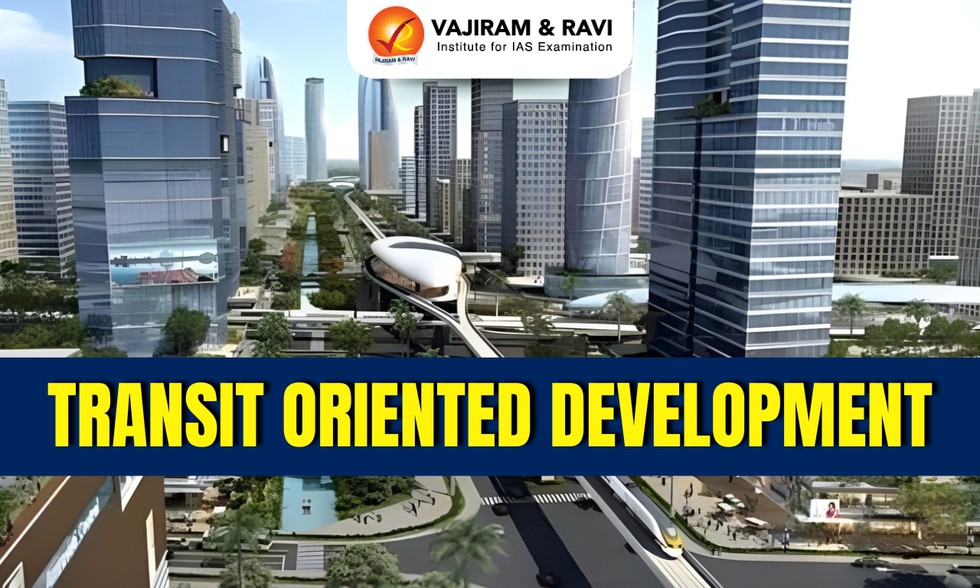
About Transit Oriented Development:
- It is an urban development strategy which aims to create the maximum possible numbers of houses, shops, offices and recreational spaces near public transport facilities.
- The TOD approach puts public transportation at the centre of the urban development plan.
- Objectives: To minimise use of personal vehicles, make commutes shorter, and reduce the cost of transport and exposure to pollutants.
- Principles of Transit Oriented Development
- Transit Hub: Neighbourhoods built around a TOD strategy are built around at least one major transit node such as a metro station or other rail systems.
- Multi-modal integration: Transfers between different modes of transport, such as switching from a metro to a city bus, should be a seamless process.
- TOD hubs should also have open public spaces such as transit plazas and parks to increase street activity and foster a sense of community.
- Pedestrian Friendly: These localities must also be friendly to pedestrians and cyclists, since one of the major thrusts of this approach is to take vehicles off the road.
- Dense Mixed Use: TOD localities should be mixed-use, so that people can live, work, and relax within a small radius.
- Advantages of Transit Oriented Development:
- To transportation agencies, it offers an additional source of non-ticket revenue.
- For land-owning agencies and governments it appears as a mode of value-capture financing, which allows them to fund public projects through potential increases in land values resulting from these projects.
Prelims Pointers
Oct. 30, 2025
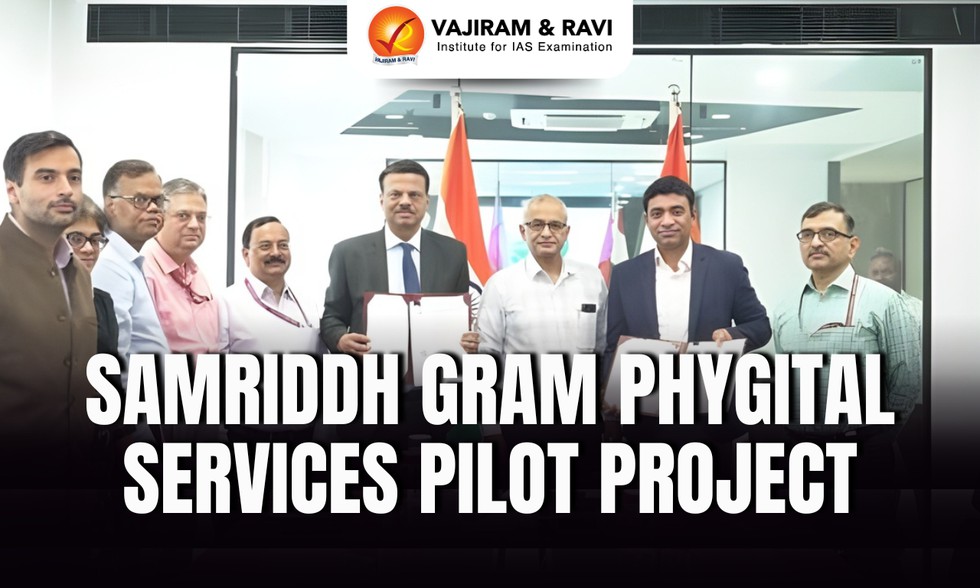
About Samriddh Gram Phygital Services Pilot Project:
- It is aimed at transforming rural India through a seamless integration of physical and digital services.
- It is a pioneering phygital (physical + digital) Services model integrating on-ground presence with robust digital infrastructure to empower rural citizens.
- It leverages BharatNet connectivity to deliver essential services seamlessly and sustainably.
- Features of Samriddh Gram Phygital Services Pilot Project:
- Under this initiative three villages have been identified namely, Ari & Umri in Madhya Pradesh, Narakoduru in Andhra Pradesh, and Chaurawala in Uttar Pradesh.
- Each village will host a Samriddhi Kendra which will serve as an integrated digital service hub.
- The Samriddhi Kendras will deliver a comprehensive suite of services:
- Education & Skilling: Smart classrooms, AR/VR-based learning, and digital skilling aligned with government schemes/initiatives.
- Agriculture: IoT-based soil testing, drone support, and smart irrigation systems.
- Healthcare: Teleconsultations, Health ATMs, and emergency care.
- e-Governance: Assisted access to citizen services, documentation, and grievance redressal.
- E-Commerce: Integration with ONDC and digital marketplaces for local entrepreneurship.
- Financial Inclusion: Digital banking and payments
- Connectivity Backbone: Strengthened BharatNet FTTH with a Village Area Network and public Wi-Fi hotspots.
Prelims Pointers
Oct. 30, 2025
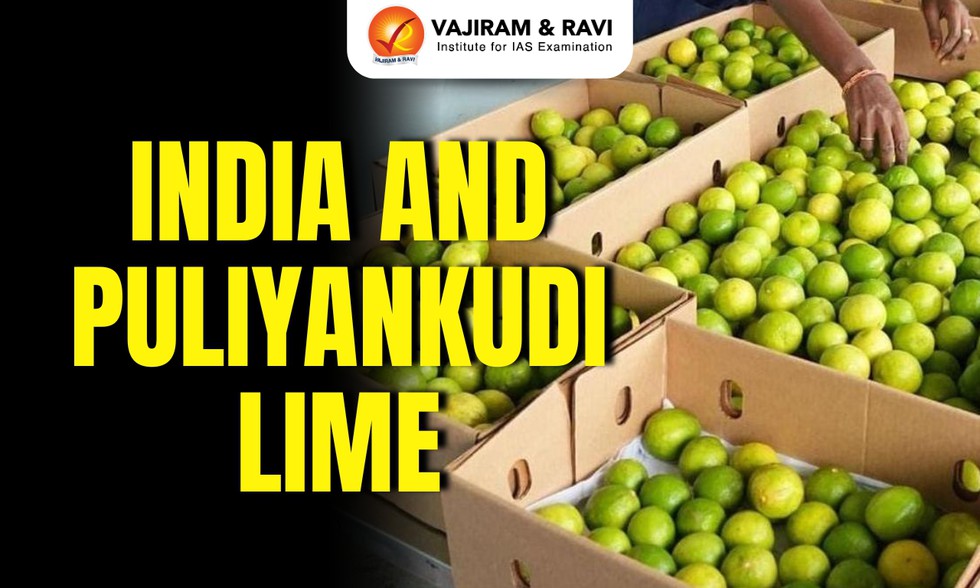
About Indi Limes:
- Indi Lime is cultivated primarily in Vijayapura district of Karnataka.
- It has received the Geographical Indication (GI) tag.
- Features: It is known for its superior quality, zesty aroma, high juice yield and balanced acidity.
- It has distinctive flavour and geographical uniqueness make it a hallmark of the region’s agricultural excellence.
- Uses: Along with its culinary applications, the lime is also valued in traditional medicine and cultural practices.
About Puliyankudi Lime
- It is extensive lime cultivated in Puliyankudi, often referred to as the “Lemon City of Tamil Nadu,”
- Features of Puliyankudi Lime: The Puliyankudi Lime, particularly the Kadayam variety, is characterised by its thin peel, strong acidity, high ascorbic acid content (34.3 mg/100g) and juice percentage of around 55%. It is rich in vitamin C and antioxidants.
- Health Benefits: It supports immunity and digestion while offering exceptional flavour and quality.
- It has officially received Geographical Indication (GI) tag in April 2025.
Key Facts about Agricultural and Processed Food Products Export Development Authority
- It was established by the Government of India under the Agricultural and Processed Food Products Export Development Authority Act passed by the Parliament in December, 1985.
- Objective: To develop and promote the export of scheduled products.
- Nodal Ministry: It works under the Ministry of Commerce and Industry.
- Headquarters: New Delhi.
Prelims Pointers
Oct. 30, 2025
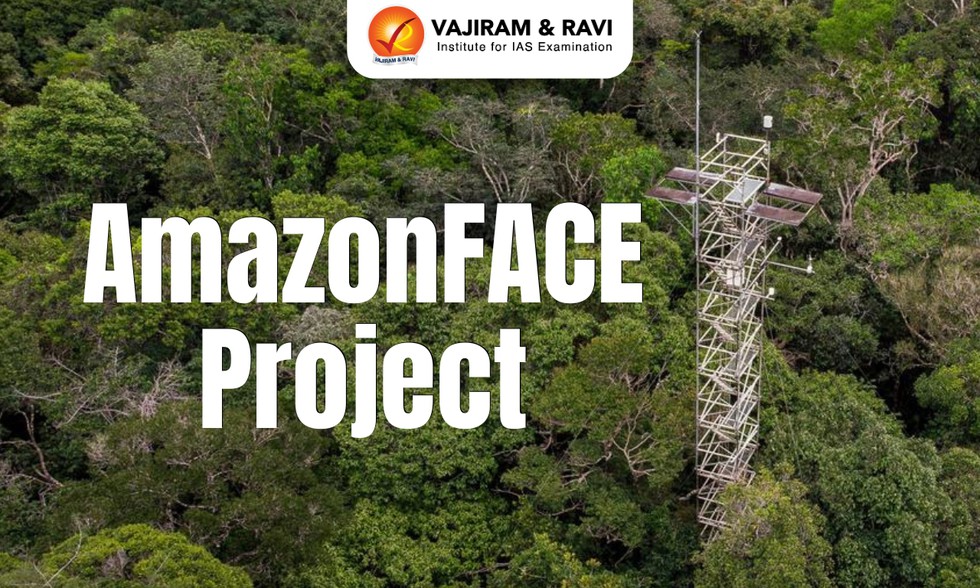
About AmazonFACE Project:
- It is a field experiment that exposes mature tropical trees to projected future CO2 concentrations in an old-growth Amazon forest stand located near Manaus, Brazil.
- This is the first experiment in a natural forest of this size in the tropics.
- Technology: The project uses Free-Air CO2 Enrichment (FACE) technology to increase understanding of the functioning of the world's largest tropical forest in light of climate change.
- How it works?
- Six rings of steel towers loom above the jungle canopy, each surrounding groups of 50 to 70 mature trees.
- Scientists will fumigate trees in three of the rings with carbon dioxide at levels simulating climate forecasts for coming decades, while the rest serve as control samples.
- Sensors record the forest’s response to changing conditions like absorption of carbon dioxide, oxygen and water vapor release in response to rain, storms and sunshine every 10 minutes.
- Supported by: The project is supported by Brazil’s federal government and the United Kingdom.
Prelims Pointers
Oct. 30, 2025
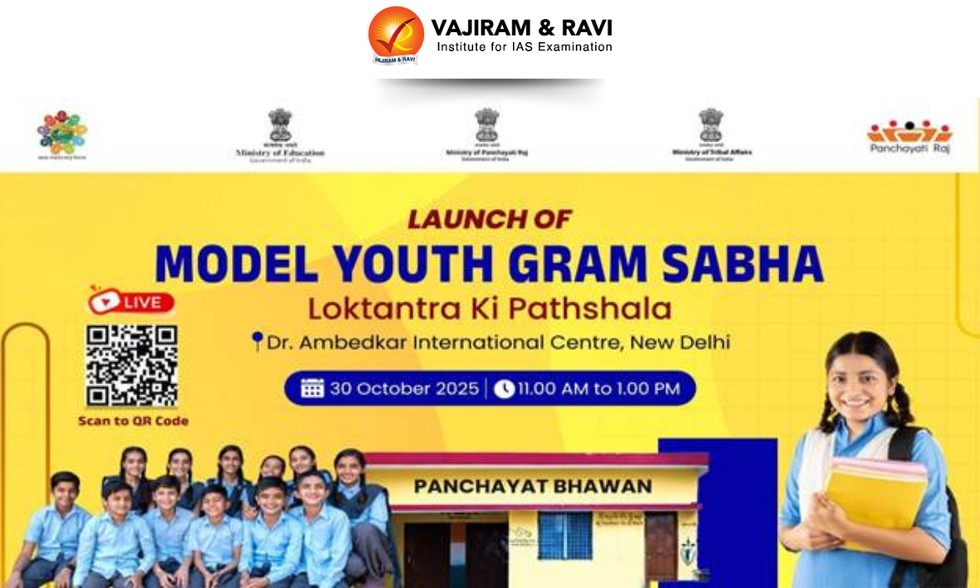
About Model Youth Gram Sabha:
- It is a simulated forum for School Children to participate in mock Gram Sabha sessions.
- It is a pioneering initiative to strengthen Janbhagidari and promote participatory local governance by engaging students in simulated Gram Sabha sessions.
- It is an initiative based on the Model UN – an educational simulation of the United Nations – in schools across the country
- Initiative of: It is an initiative of the Ministry of Panchayati Raj, in collaboration with Ministry of Education and Ministry of Tribal Affairs.
- Implementation: It will be rolled out across more than 1,000 schools nationwide, including Jawahar Navodaya Vidyalayas, Eklavya Model Residential Schools (EMRSs), and State Government Schools.
- Key Features of Model Youth Gram Sabha
- Students from classes 9-12 will play the roles of sarpanch, ward members, and village-level officials, including village secretary, Anganwadi worker etc.
- They will hold mock meetings of the Gram Sabha, discuss various issues, and prepare the village budget and development plans.
- The Panchayati Raj Ministry will also provide a support of Rs 20,000 to each school for holding the mock Gram Sabha.
Oct. 29, 2025
Prelims Pointers
Oct. 29, 2025

About Doctrine of Merger:
- It is a common law doctrine founded on the principle of maintenance of decorum and propriety in the functioning of Courts and Tribunals and preserving the sanctity of the justice delivery system.
- The underlying logic being that there cannot be more than one decree or operative order governing the same subject matter at a given point of time.
- It provides that when an appellate court passes an order, the order passed by the lower court is merged with that order.
- The doctrine is not recognized statutorily but is a statement of judicial propriety and seeks to instill discipline in the functioning of subordinate adjudicating authorities, whether judicial, quasi-judicial, or administrative.
- The applicability of the doctrine of merger entails the existence of a decision of a subordinate court/forum against which a right of appeal/revision before a superior forum/authority exists, which has been exercised and which has either modified, reversed or affirmed the decision of the subordinate authority.
- The consequence of such an act would be that the decision of the subordinate authority shall merge with that of the superior forum, which only shall sustain, be operative and capable of being enforced.
- The essence of the doctrine of merger is that it is only the decisions of the appellate, revisional, or higher authority that subsist, and the order under challenge ceases to have an independent existence.
- The doctrine solves the issue of which order must be enforced and given importance if there are multiple orders passed by both subordinate and superior courts on a single issue.
- It is not a doctrine of universal or unlimited application. It will depend on the nature of the jurisdiction exercised by the superior forum and the content or subject matter of the challenge.
Prelims Pointers
Oct. 29, 2025
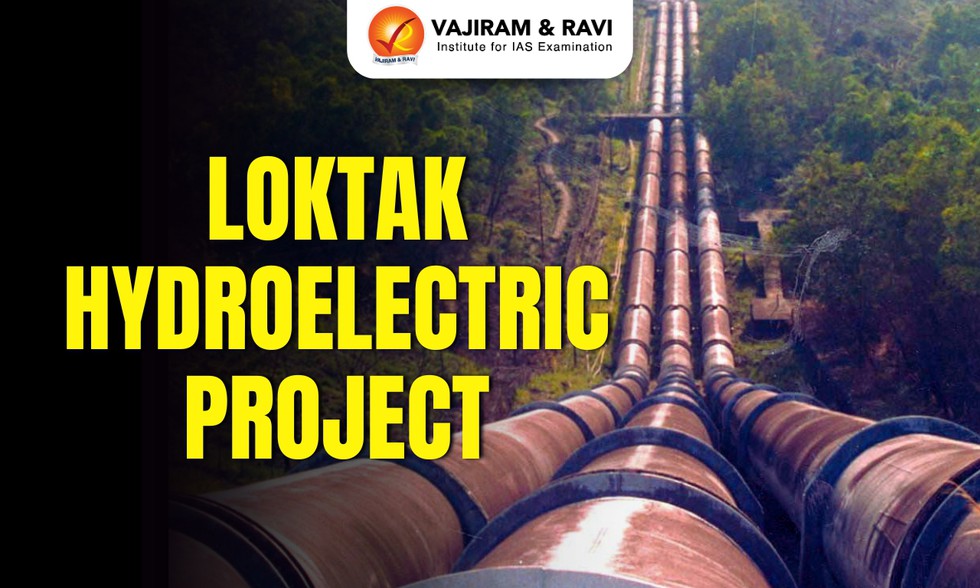
About Loktak Hydroelectric Project:
- It is a 105 MW hydropower project.
- It is located in Manipur.
- It is constructed on the Loktak Lake, the largest freshwater lake in Northeast India.
- It has been developed in a single phase.
- The project construction commenced in 1971 and subsequently entered into commercial operation in 1983.
- A major component of the project is the Ithai barrage – which acts as an artificial reservoir to ensure sufficient volumes of water for the project.
- The project is currently owned by NHPC Limited (erstwhile National Hydroelectric Power Corporation).
- The power generated from the project is sold to Assam Power Distribution under a power purchase agreement for a period of 35 years, starting from 2016.
Prelims Pointers
Oct. 29, 2025
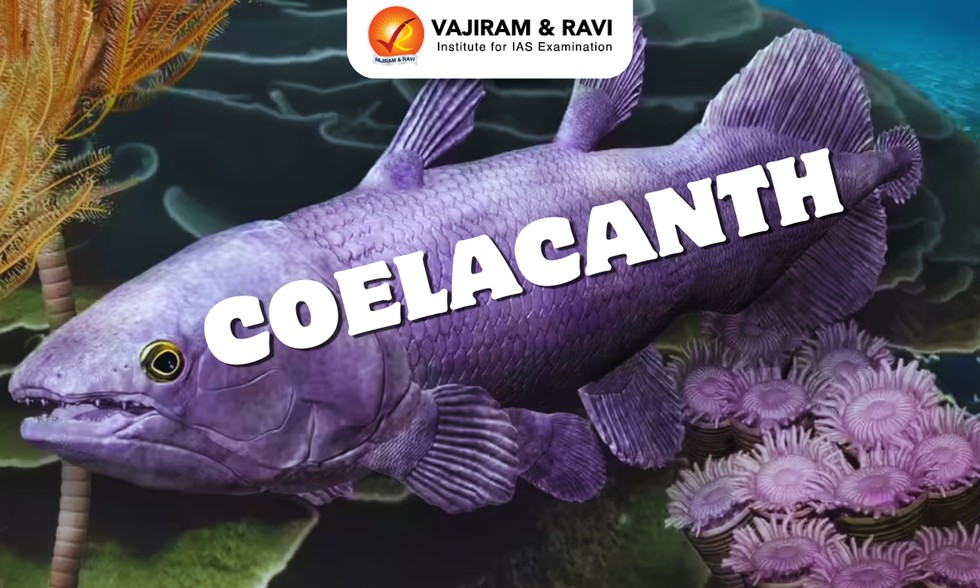
About Coelacanth:
- The Coelacanth is a prehistoric, lobe-finned fish (belonging to the order Coelacanthiformes) that was once thought to be extinct for about 66 million years, until it was rediscovered alive in 1938 off the coast of South Africa.
- It is often called a “living fossil”.
- The earliest coelacanth fossils date back as far as the Devonian period, approximately 420 mya.
- At one time coelacanths were a large group comprising about 90 valid species that were distributed worldwide in both marine and freshwaters.
- At present, there are two living species of coelacanth, the West Indian Ocean coelacanth and the Indonesian coelacanth.
- These fish live in deep saltwater environments and can grow to be nearly 2 meters long.
- They have fleshy, limb-like fins that are internally supported by bone.
- Their fins are also paired and move in a synchronized pattern similar to four-limbed animals.
- As one of the last lobe-finned fish, coelacanths have numerous characteristics unique among living fish.
- Among them is the presence of a special electrosensory organ in the snout called the "rostral organ."
- This organ is filled with a gel and enables the coelacanth to sense low-frequency electrical signals and "see" in the dark.
- Another is a joint or "hinge" in the skull that allows the front portion of the braincase to swing upwards, greatly enlarging the gape of the mouth.
Prelims Pointers
Oct. 29, 2025

About SJ-100:
- It is a new generation short-haul jet aircraft of Russian origin.
- Earlier called the Sukhoi Superjet 100, it originally was designed by the now-merged Russian aircraft company Sukhoi Civil Aircraft.
- It is a twin-engine, narrow-body aircraft.
- The aircraft is primarily used for commercial purposes.
- As on date, over 200 SJ-100 aircraft have been manufactured.
- The aircraft are being operated by more than 16 airlines across the world, nine of them being from Russia.
- It is capable of accommodating 103 seats and has a flight range of 3,530 kilometres.
- The aircraft has been touted as having low operating costs for airlines.
- It can operate at extreme weather conditions, from -55 degrees Celsius to +45 degrees Celsius.
Prelims Pointers
Oct. 29, 2025
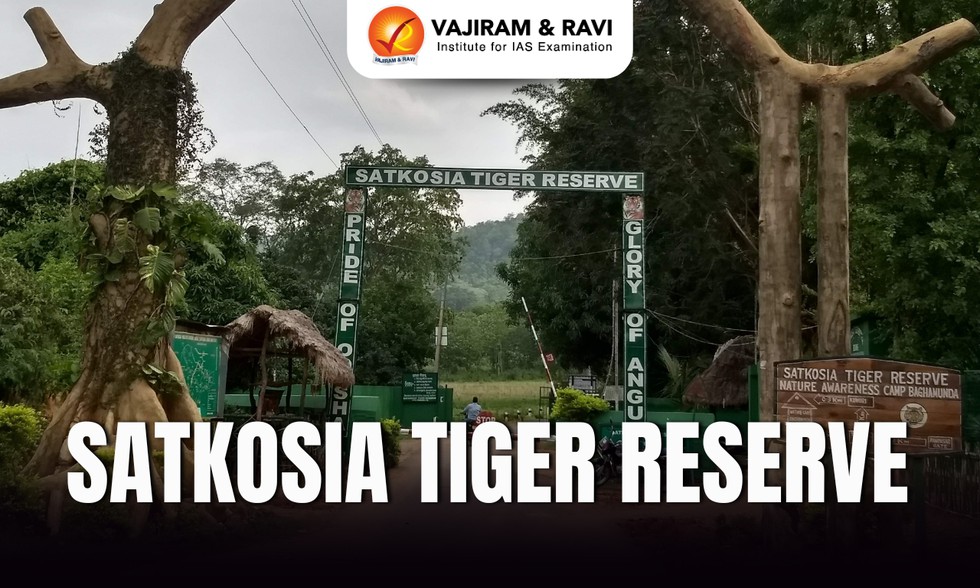
About Satkosia Tiger Reserve:
- It is located in the heartland of Odisha and spread over four districts, viz. Angul, Cuttack, Boudh, and Nayagarh.
- Spanning 1,136.70 sq. km, the reserve encompasses the Satkosia Gorge Sanctuary and Baisipalli Wildlife Sanctuary, divided by the Mahanadi River.
- The area is also a part of the Mahanadi Elephant Reserve.
- It is the meeting point of two biogeographic regions of India, the Deccan Peninsula and the Eastern Ghats, contributing immense biodiversity.
- Landscape:
- The terrain is hilly with moderate to steep slopes and narrow valleys.
- The average elevation of the terrain varies between 37 m and 932 m, with the lowest point being at Katrang and the highest point being at Sunakhania.
- Vegetation: The forest vegetation comprises North Indian tropical moist deciduous forests and Moist peninsular low-level sal.
- Flora:
- The main tree species is sal, which grows in gregarious formations.
- Other associate species are Asan (Terminalia alata), Dhaura (Anogeissus latifolia), Bamboo (Dendrocalamus strictus), and Simal (Bombax ceiba).
- Fauna:
- The flagship species among the fauna include tiger, leopard, elephant, spotted deer, sambar, chowsingha, barking deer, bison, wild dog, sloth bear, jackal, giant squirrel, and porcupine.
- It is the natural habitat of two endangered species, viz., the freshwater crocodile and the gharial.
Prelims Pointers
Oct. 29, 2025
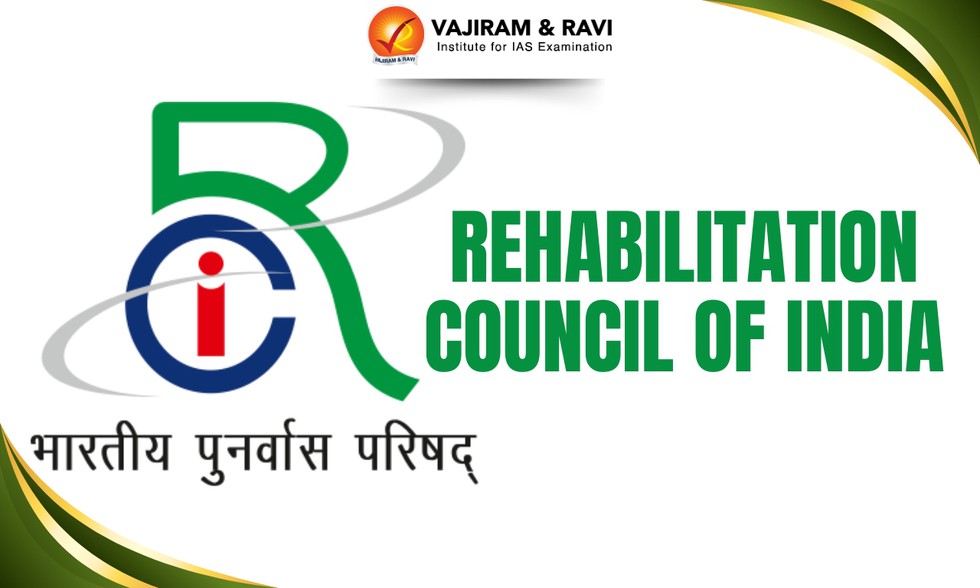
About Rehabilitation Council of India (RCI):
- It is a statutory body established by an Act of Parliament.
- Background: It was set up as a registered society in 1986. In September 1992, the RCI Act was enacted by Parliament and it became a Statutory Body on 22 June 1993.
- Mandate: To regulate and monitor services given to persons with disabilities, to standardise syllabi and to maintain a Central Rehabilitation Register of all qualified professionals and personnel working in the field of Rehabilitation and Special Education.
- Nodal Ministry: Ministry of Social Justice & Empowerment
- Objectives of Rehabilitation Council of India:
- To regulate the training policies and programmes in the field of rehabilitation of persons with disabilities
- To bring about standardization of training courses for professionals dealing with persons with disabilities
- To maintain Central Rehabilitation Register for registration of professionals/ personnel
- The Council also prescribes minimum standards of education and training for 16 categories of professionals and personnel allocated to RCI.
- To recognize the national institutes and apex institutions on disability as manpower development centres.
- The Council also prescribes minimum standards of education and training for 16 categories of professionals and personnel allocated to RCI.
Prelims Pointers
Oct. 29, 2025
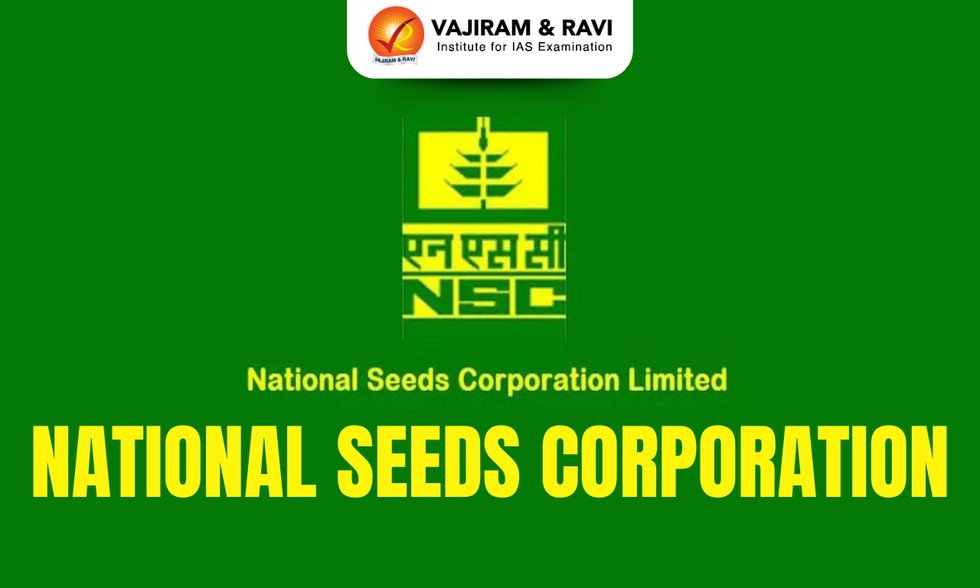
About National Seeds Corporation:
- It was established in 1963 to undertake production of foundation and certified seeds.
- It is under the administrative control of the Department of Agriculture & Farmer’s Welfare, Ministry of Agriculture and Farmer's Welfare.
- It is a Schedule ‘B’ – Mini Ratna Category-I Company, fully owned by the Government of India.
- Functions of National Seeds Corporation
- It has been playing a pivotal role in producing and supplying quality seeds to farmers across the country.
- It plays a key role in the implementation of various schemes of the Govt. of India like “National Mission on Oil Seed and Oil Palm (NMOOP)”, “National Food Security Mission (NFSM)” and “Mission for Integrated Development of Horticulture (MIDH).
- It provides technical support to the seed producing agencies including State Seed Corporations by imparting training of personnel engaged in the production of seeds in those organizations.
- It is the nodal agency for the implementation of the Central Sector Scheme to create infrastructure facilities for establishment of processing plants and storage godowns in different states in the private sectors.
- The SAARC seed bank maintained by NSC with the grant in aid of the Govt. of India holds a larger quantity of seeds of different crops & varieties.
Prelims Pointers
Oct. 29, 2025
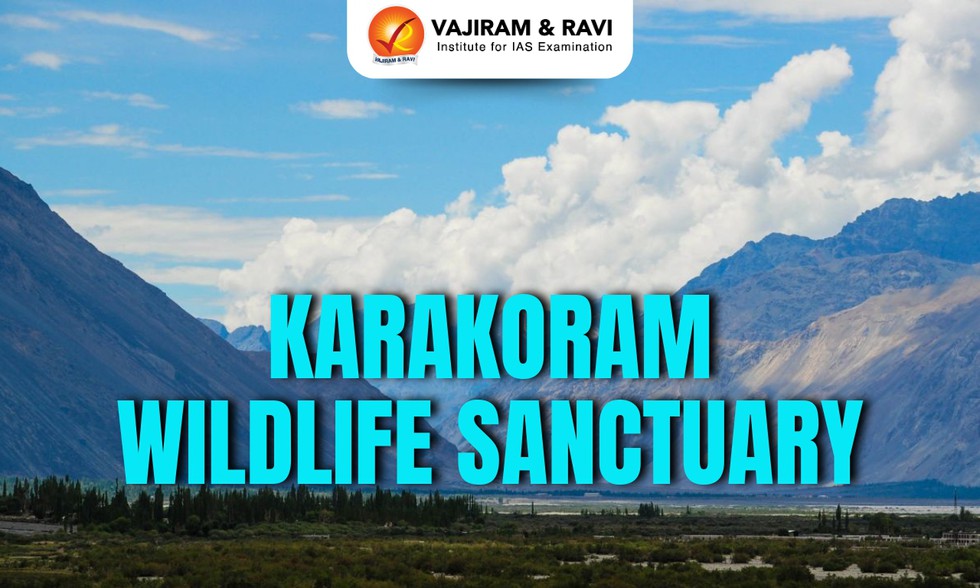
About Karakoram Wildlife Sanctuary:
- Location: It is located in the Union Territory of Ladakh along the territory’s border with Jammu and Kashmir.
- It is situated just to the north of Hemis National Park and to the east of Deosai National Park.
- Terrain: It is well known for its diverse landscape, featuring snow-covered peaks, alpine fields, and deep ravines.
- Climatic condition: The average temperature during the warmest month is lower than 0 degrees Celsius in some heights and remains below 10 degrees Celsius in other parts.
- Major Peaks: Major peaks within this Wildlife Sanctuary include Saltoro Kangri, Saser Kangri I, and K12.
- Rivers: Shyok and Nubra Rivers are the major water sources of this sanctuary.
- Vegetation: It is rich in alpine vegetation, medicinal plants, cold desert flora, endemic and rare species, and glacier vegetation.
- Fauna: Ural, the argali, Tibetan gazelle, Siberian ibex, the bharal (blue sheep), and the snow leopard, Tibetan antelope (chiru) and Bactrian cameletc.
- Flora: It comprises broad-leaved shrubs namely the Rosia webbiana, Ephedra, Caragianae and several other bushes.
Prelims Pointers
Oct. 29, 2025
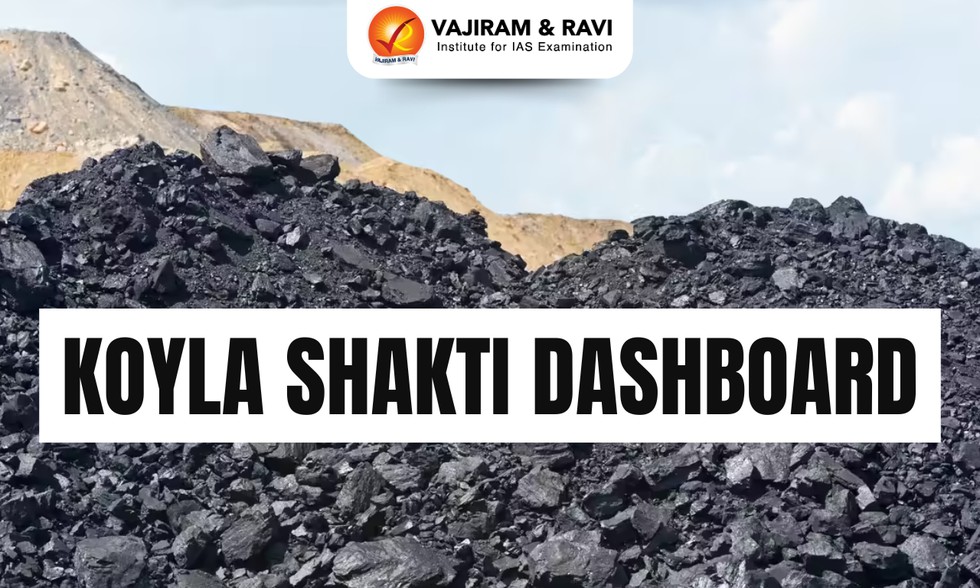
About Koyla Shakti Dashboard:
- It is a Smart Coal Analytics Dashboard that will serve as a unified platform for real-time monitoring and analysis of coal sector operations.
- It serves as a centralized digital platform integrating data from multiple stakeholders, including:
- Coal producing companies and private miners
- Central Ministries and Departments such as Coal, Railways, Power, Finance, Ports, Shipping & Waterways, and Road Transport & Highways
- State Departments managing coal production (E-khanij platforms)
- Power generation companies and other industrial coal consumers
- Port authorities and private coal-handling terminals
- Objectives: To strengthen operational efficiency, promote transparency, and enhance coordination across the coal supply chain.
- Key Features of Koyla Shakti Dashboard
- Unified Visibility: Integration of diverse data sources into a single, comprehensive interface.
- Real-Time Monitoring: Continuous tracking of coal production, dispatch, and logistics operations.
- Data-Driven Decision Making: Analytical tools to support evidence-based policy formulation and management decisions.
- Incident Response: Timely alerts and notifications enabling faster resolution of operational challenges.
- Standardization: Uniform metrics and reporting formats ensuring consistency across departments.
- Operational Efficiency: Simplification of monitoring and reporting, minimizing manual errors.
- Scalability: Provision for integration with future digital systems and additional data sets.
- Transparency and Accountability: Enhanced visibility of performance indicators for all stakeholders.
- Policy Planning and Forecasting: Analytical insights to support demand forecasting and strategic planning.
Prelims Pointers
Oct. 29, 2025
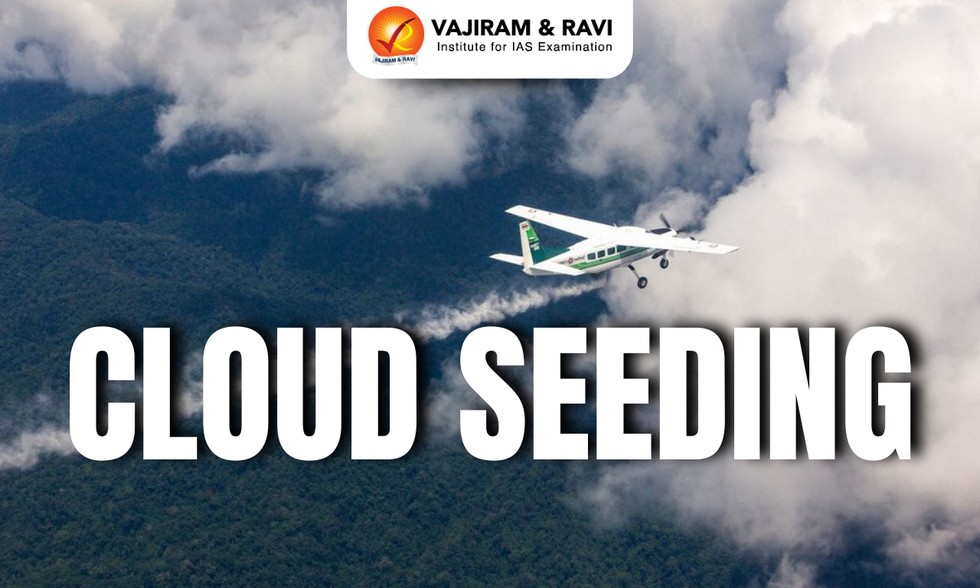
About Cloud Seeding:
- It is a weather-modification technique used to modify suitable clouds.
- To artificially induce rain, clouds are usually injected with salts like silver iodide, potassium iodide, or sodium chloride, which is the ‘seed’.
- These salts are expected to provide additional nuclei around which more cloud droplets can form.
- They are dispersed into the cloud either using aircraft or through generators on the ground.
- Meteorological requirements for Cloud Seeding
- Sufficient moisture: The target clouds must contain an adequate amount of water vapour and liquid water to be condensed into precipitation.
- Cloud characteristics: Clouds targeted for seeding must have sufficient vertical thickness.
- For example, some cloud-seeding projects require clouds to be at least 1 kilometre thick.
- Favourable winds: Wind direction must transport the seeding material toward the intended area and wind speed must not be so high that it prevents clouds from growing tall or blows the seeding agents away from the target zone.
- Vertical air currents: Clouds with strong vertical updrafts are considered ideal because they help disperse the seeding agents and promote cloud development.
Oct. 28, 2025
Prelims Pointers
Oct. 28, 2025
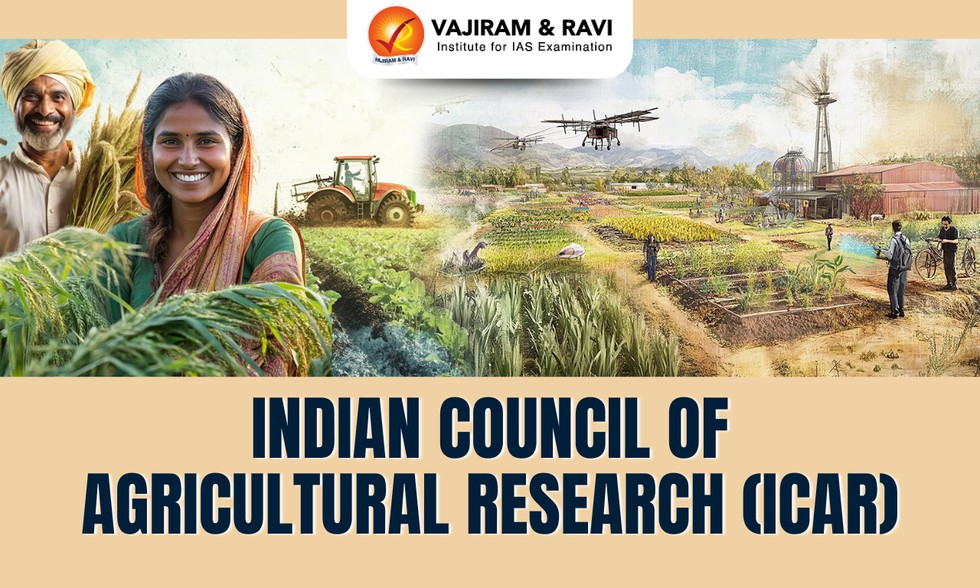
About Indian Council of Agriculture Research (ICAR):
- It is an autonomous organisation under the Department of Agricultural Research and Education (DARE), Ministry of Agriculture and Farmers Welfare, Government of India.
- It is the apex body for coordinating, guiding, and managing research and education in agriculture, including horticulture, fisheries, and animal sciences, throughout the country.
- Formerly known as the Imperial Council of Agricultural Research, it was established on 16 July 1929 as a registered society under the Societies Registration Act, 1860, in pursuance of the report of the Royal Commission on Agriculture.
- The ICAR has its headquarters in New Delhi.
- With 101 ICAR institutes and 71 agricultural universities spread across the country, this is one of the largest national agricultural systems in the world.
- ICAR’s primary mandate focuses on the thematic areas of Crop Science, Horticultural Science, Natural Resource Management, Agricultural Engineering, Animal Science, Fisheries Science, Agricultural Education and Agricultural Extension.
- The ICAR has played a pioneering role in ushering in the Green Revolution and subsequent developments in agriculture in India through its research and technology development.
- It has played a major role in promoting excellence in higher education in agriculture.
- It is engaged in cutting-edge areas of science and technology development and its scientists are internationally acknowledged in their fields.
Prelims Pointers
Oct. 28, 2025
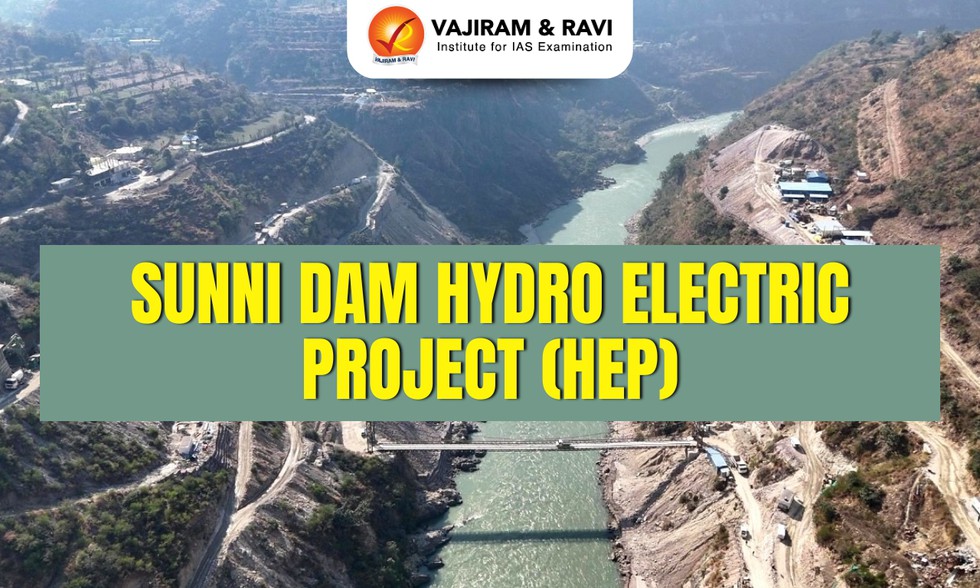
About Sunni Dam Hydro Electric Project (HEP):
- It is a 382 MW run-of-the-river hydroelectric project.
- It is being developed on the Satluj River in the Shimla and Mandi districts of Himachal Pradesh.
- The project is owned by Satluj Jal Vidyut Nigam (SJVN), a collaborative venture between the government of India and the state government of Himachal Pradesh.
- Sunni HEP will involve building a concrete gravity dam across the Satluj River and an underground powerhouse on the right bank of it.
- The project will generate 1,382 million units of electricity annually.
- The project is a part of the larger Luhri HEP, which is being developed in three distinct stages along the Satluj River within the northern Indian state of Himachal Pradesh.
- The stages comprise the 210 MW Luhri Stage-1, the 172 MW Luhri Stage-II, and the 382 MW Sunni HEP.
Prelims Pointers
Oct. 28, 2025
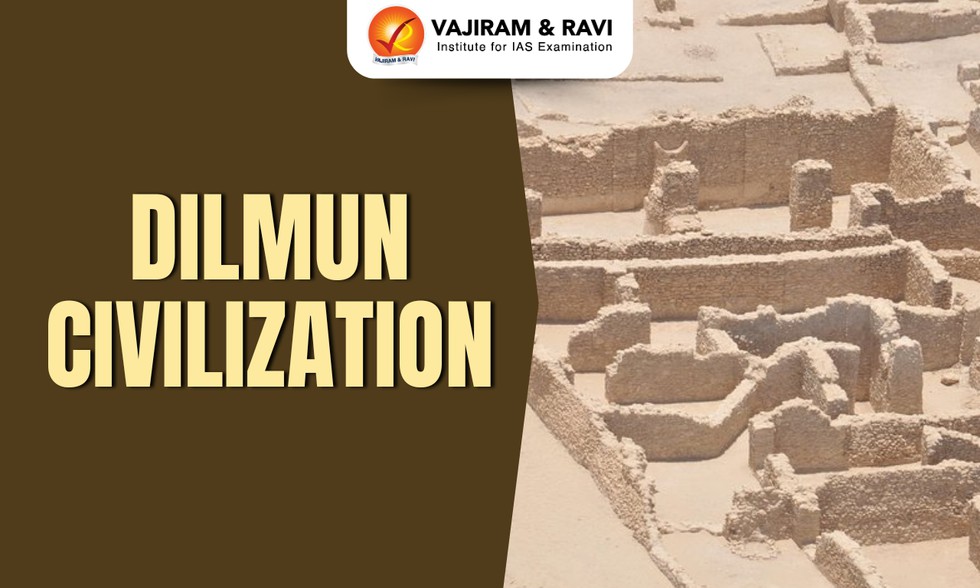
About Dilmun Civilization:
- Dilmun (Telmun) was a civilization located in the eastern part of the Arabian Peninsula.
- Dilmun was mainly located on the islands of Bahrain and Failaka Island in Kuwait.
- It also had a presence in parts of Saudi Arabia, Qatar, Oman, and the nearby Iranian coast in the Persian Gulf.
- Although this was quite an old civilization, it is much less famous than the four cradles of civilization of the Old World,e., Mesopotamia, Ancient Egypt, the Indus Valley Civilization, and the Yellow River Civilization.
- Growth:
- The Dilmun civilization first took shape towards the end of the 4th millennium BCE, around 3200 to 3000 BCE, starting out as a modest trading hub.
- By the early 3rd millennium BCE, it had grown into a recognised power in the region.
- Dilmun acted as a central point for trade between two of the biggest ancient civilizations: Mesopotamia (modern-day Iraq) and the Indus Valley Civilization (modern-day Pakistan and India).
- Goods like copper, pearls, and other materials passed through Dilmun. This made it a rich and powerful place.
- The Land of Copper:
- One of Dilmun's most important roles was providing copper. Copper was a vital metal in the Bronze Age, used for tools, weapons, and art.
- Dilmun helped supply this important metal to Mesopotamia, which needed it for its growing cities and armies.
- Decline:
- After 1600 BCE, the empire began to dwindle, then slowly declined like many other empires.
- It was eventually absorbed into Mesopotamia and Persia at a later date.
- Archaeologists have found many ancient sites in Bahrain and Kuwait that match the descriptions of Dilmun.
- These sites include old settlements, burial mounds, and artifacts like unique stamp seals.
Prelims Pointers
Oct. 28, 2025
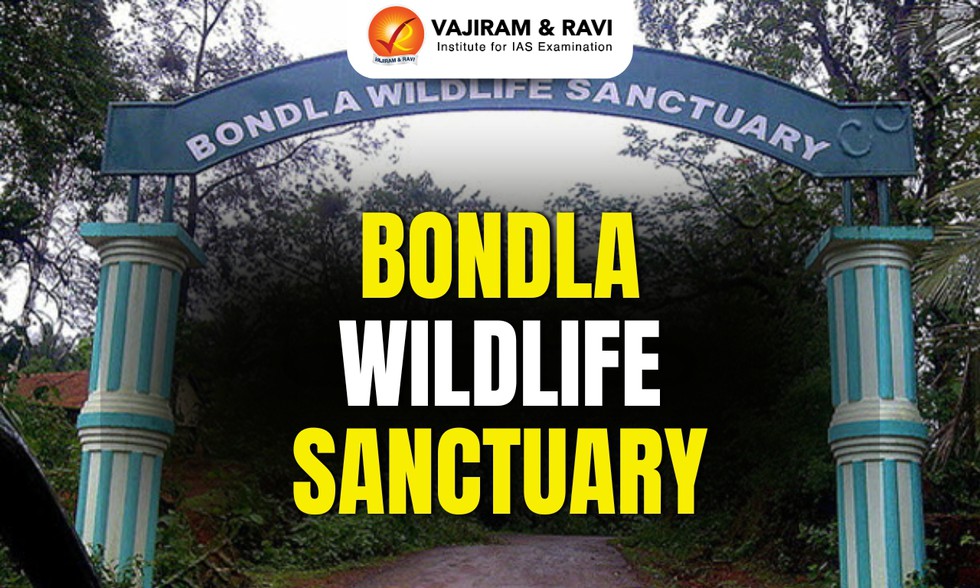
About Bondla Wildlife Sanctuary:
- It is located in the northeastern portion of Goa.
- It is spread over an area of approximately 8 sq.km. and is located 3000 ft. above on the lush foothills of the Western Ghats.
- Because of the fact that it is very small in size, the Bondla Wildlife Sanctuary is better known as a wildlife resort.
- This sanctuary was initially set up as a refuge for orphaned and injured animals.
- Today, apart from the wildlife species, the sanctuary houses a deer safari park, a rose garden, a zoo, and a botanical garden
- The Rangado river flows on the eastern side, while the Madhel flows across the northern side.
- Vegetation: The sanctuary is mostly covered with moist deciduous forest with small patches of semi-evergreen forest and cane along streams.
- Flora: The dominant trees in this Sanctuary are Terminalia crenulata (Matti, the state tree of Goa) and Rosewood.
- Fauna:
- It is home to animals like Panthers, Leopard Cats, Deer, Wild Boar, Gaur, and Malabar Giant Squirrel.
- The bird species include Common Grey Hornbills, Golden-Backed Woodpeckers and Ruby-Throated Yellow Bulbuls.
Prelims Pointers
Oct. 28, 2025
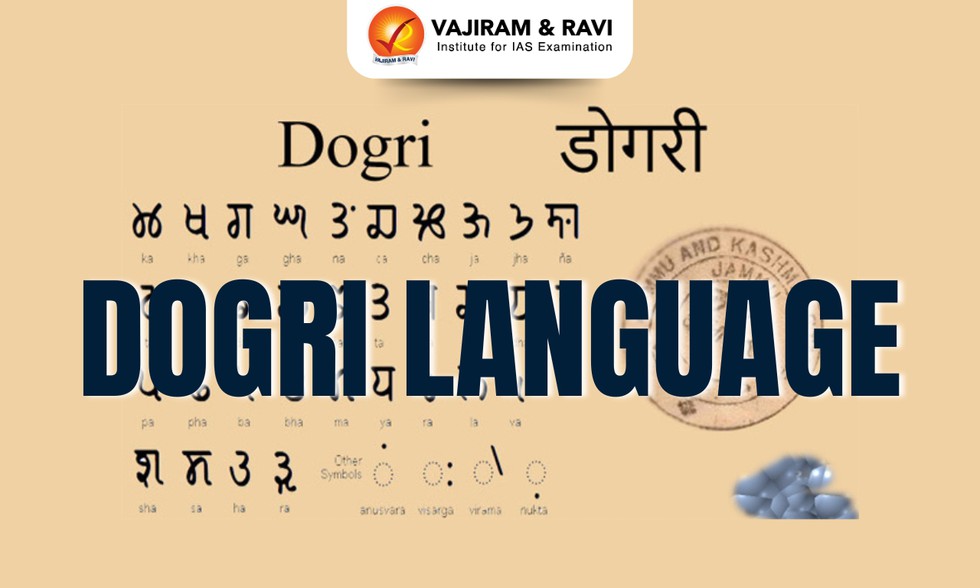
About Dogri Language:
- It is an Indo-Aryan language, part of the larger Indo-European family of languages.
- It is spoken in India, chiefly in the Jammu region of Jammu and Kashmir.
- It is also spoken in the state of Himachal Pradesh and in northern Punjab, other parts of Jammu and Kashmir, and elsewhere.
- The earliest written reference to Dogri (using the paleonym Duggar) is found in the Nuh sipihr (“The Nine Heavens”), written by the poet Amir Khosrow in 1317 CE.
- It has its origin in the old Indo-Aryan language,e., language of the Vedas and Laukik Sanskrit.
- Like other modern Indo-Aryan languages, Dogri has also passed through Old Indo-Aryan (Sanskrit) and Middle Indo-Aryan (Pali, Prakrit, and Apabhramsha) stages of development and entered the modern Indo-Aryan stage around the 10th century A.D.
- Hence, it shows its three-fold process of development of its sound structure, expressing its affinity with Shaurseni Prakrit.
- Initially written in the Takri script, Dogri now uses the Devanagari script, which is also utilized by several other Indian languages.
Prelims Pointers
Oct. 28, 2025

About INS IKSHAK:
- It is the indigenously built Survey Vessels (Large) (SVL) which will study underwater hydrography.
- The ship’s name, Ikshak, meaning “The Guide”, symbolises its purpose: to chart unexplored waters, ensure safe navigation for mariners.
- It is constructed by Garden Reach Shipbuilders & Engineers (GRSE) Ltd, Kolkata.
- Features of INS IKSHAK
- It boasts over 80% indigenous content.
- The Survey Vessel (Large) ships are 110 m long, 16 m wide with deep displacement of 3400 tons.
- Propulsion system of the ship consists of two Main Engines in twin shaft configuration and is designed with cruise speed of 14 knots and maximum speed of 18 knots.
- Role: Beyond its primary role in hydrographic survey operations, Ikshak is equipped with dual-role functionality, enabling it to operate as a Humanitarian Assistance and Disaster Relief (HADR) platform and a hospital ship during emergencies.
- It is the first vessel in the SVL class to feature dedicated accommodation for women officers and sailors.
Prelims Pointers
Oct. 28, 2025

About Taal Volcano:
- Location: It is located in Batangas province about 70 kilometers south of Manila, Philippines.
- Taal is classified as a “complex” volcano by the Philippine Institute of Volcanology and Seismology (PHIVOLCS).
- Previous eruptions: Taal is an active volcano within a massive caldera, with at least 38 recorded eruptions in the last 450 years.
- The caldera is believed to have formed during a series of prehistoric eruptions between 140,000 and 5,380 BCE.
- Features of Taal Volcano
- It is a stratovolcano with a crater lake on a 5-km-wide volcanic island within a large caldera.
- It does not rise from the ground as a distinct, singular dome but consists of multiple stratovolcanoes, conical hills and craters of all shapes and sizes.
What is a Complex volcano?
- It is also called a compound volcano, is one that consists of a complex of two or more vents, or a volcano that has an associated volcanic dome, either in its crater or on its flanks.
- Examples: Vesuvius, besides Taal.
Prelims Pointers
Oct. 28, 2025
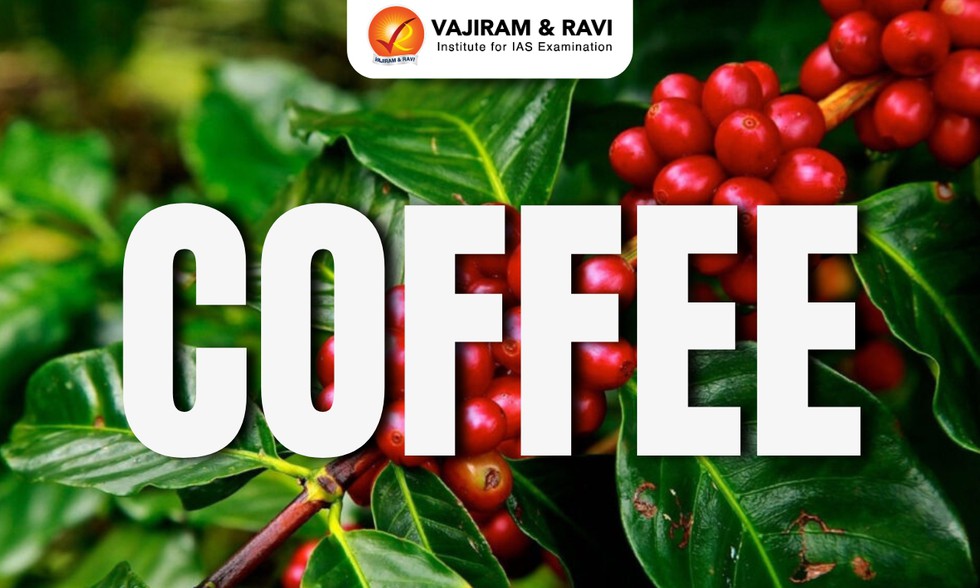
About Coffee:
- It is a tropical plant generally grown under shady trees.
- Required Climatic conditions for coffee production
- It is grown on hill slopes at elevations from 600 to 1,600 metres above sea level.
- Climate: It requires a hot and humid climate for its growth.
- Temperature: 15°C and 28 °C
- Rainfall: It requires 150 to 250 cm of rainfall.
- Soil: Well-drained, loamy soil containing a good deal of humus and minerals like iron and calcium are ideal for coffee cultivation.
- Dry weather is necessary at the time of ripening of the berries.
- Types of Coffee: Robusta and Arabica
- Major Coffee growing states: It is largely cultivated in Karnataka, Kerala, Tamil Nadu, Andhra Pradesh and Odisha, among which, Karnataka produces the most with over 70% of the total output.
- Europe is the top destination for India’s coffee exports.
- The major countries which import the commodity from India include Italy, Germany, Belgium, Middle East nations, Korea, and Japan.
Prelims Pointers
Oct. 28, 2025
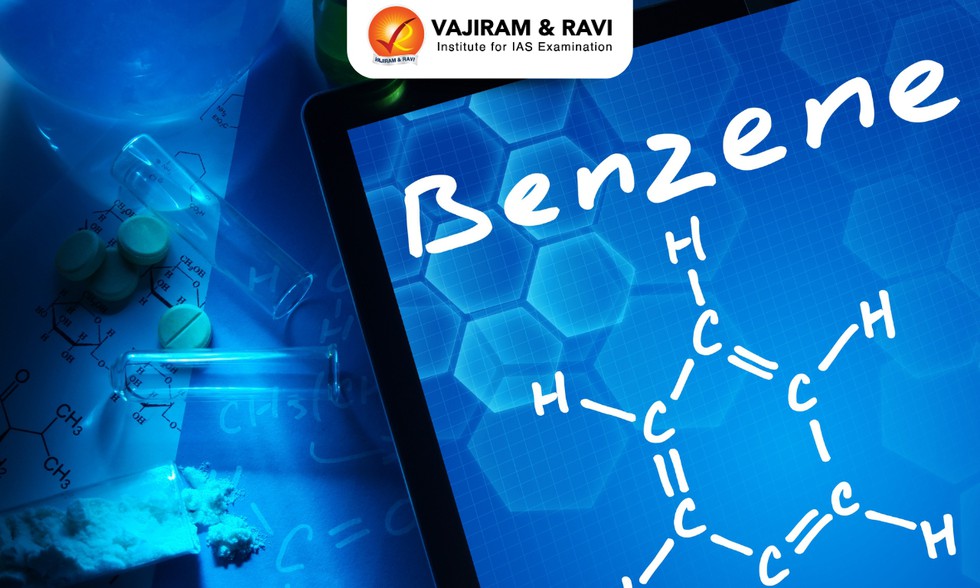
About Benzene:
- Benzene is a colorless liquid with a sweet odor.
- Discovered by: In 1825, the English scientist Michael Faraday, isolated a new substance from the oily residue of the illuminating gas used to light London and August Kekulé proposed a revolutionary cyclic structure for benzene.
- Properties of Benzene:
- It evaporates into the air very quickly and dissolves slightly in water.
- It is highly flammable and is formed from both natural processes and human activities.
- Natural sources of benzene include volcanoes and forest fires.
- It forms the base for styrene, phenol, cyclohexane, nylon, and polystyrene.
- It belongs to the BTEX family (Benzene, Toluene, Ethylbenzene, Xylene) of so called aromatics because of their sweet, pleasant smell.
- Application of Benzene:
- Some industries use benzene to make other chemicals which are used to make plastics, resins, and nylon and synthetic fibers.
- Benzene is also used to make some types of rubbers, lubricants, dyes, detergents, drugs, and pesticides.
- Impact on Health: Long-term exposure to Benzene leads to acute myeloid leukaemia, aplastic anemia, and myelodysplastic syndrome.
Prelims Pointers
Oct. 28, 2025
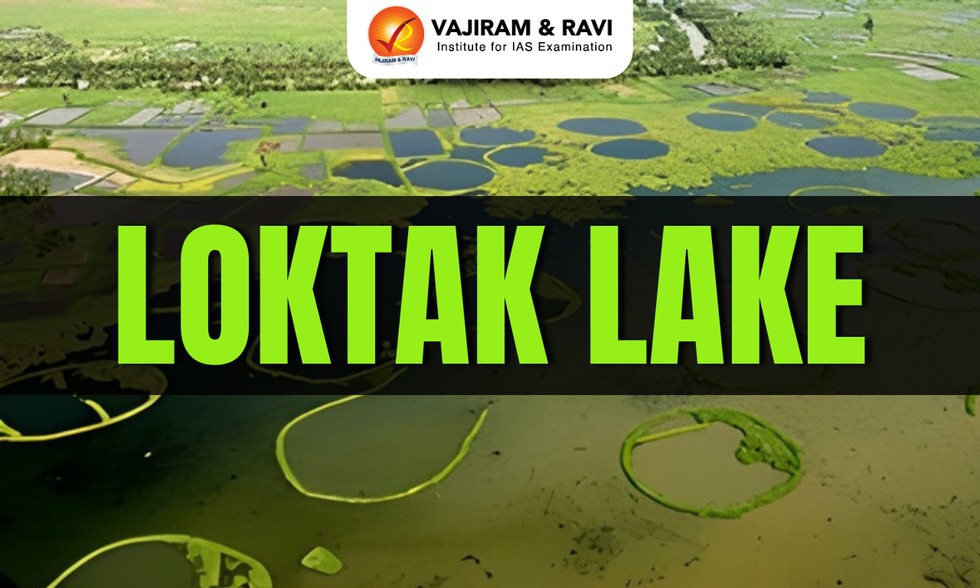
About Loktak Lake:
- Location: It is located in the state of Manipur.
- It is the largest freshwater lake in Northeast India.
- It is famous for the phumdis floating over it.
- The Keibul Lamjao National Park, home to the rare brow-antlered deer, is an integral part of the lake.
- Rivers: Rivers like Khuga, Western, Nambul, Imphal, Kongba, Iril, Thoubal, Heirok, and Sekmai drains into this lake.
- It was designated as a wetland of international importance under the Ramsar Convention in
- It features under the Montreux Record in 1993, “a record of Ramsar sites where changes in ecological character have occurred, are occurring or are likely to occur”.
- Flora and Fauna: Loktak Lake is home to 132 plant species and 428 animal species.
- It supports hydropower, fisheries, transport, and tourism.
Issues Highlighted by the study
- Changes in land use, agriculture, settlements, and shifting cultivation have been deteriorating the water quality of rivers feeding the lake.
- These activities are threatening its biodiversity and the livelihoods of the local communities.

